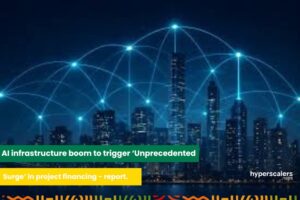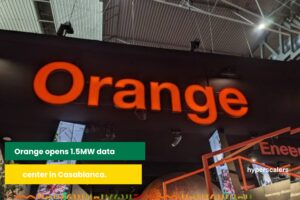Industry power trends and a global push for sustainability are leading decision-makers and data center operations groups to consider alternatives to traditional air cooling, says Max Reynolds, CEO of Subsea Cloud. Two key industry trends are driving this shift.
First, the power demands at the chip level are increasing significantly. A few years ago, server CPU and GPU power levels were around 205 W and 300 W, respectively. Today, competition among CPU vendors has pushed power levels towards 500 W, and AI and machine learning workloads have driven GPU power to 700 W, with 1000 W on the horizon. These increases impact the temperatures at which these components can operate. Silicon is temperature-limited, meaning the junction temperature is fixed. As more power flows through the processor package, the case temperature must decrease to maintain the same junction temperature, stressing traditional air-cooling approaches and leading to the consideration of liquid cooling solutions.
Additionally, the global energy crisis is pushing all sectors towards greater sustainability. For servers and data centers, this means targeting green energy sources, reducing overall facility energy use, and minimizing water use. These industry challenges necessitate new cooling solutions that can handle higher power levels and offer sustainability benefits.
Alternative Cooling Solutions
Five unique cooling solutions are currently available, each with varying performance, cost, and reliance on chilled water supplies:
- Air cooling with larger server chassis form factors
- Direct liquid cooling (DLC) using water or Propylene Glycol (PG) solutions
- DLC using two-phase dielectric fluids
- Single-phase immersion cooling
- Two-phase immersion cooling
A sixth, more innovative but less mainstream solution involves placing data centers underwater. Operators like Subsea Cloud claim this can reduce latency by up to 98% and decrease power consumption and carbon emissions by 40%. Maxie Reynolds, CEO of Subsea Cloud, advocates for immersion cooling in this article.
Cool It, Before Our Problems Get Worse
An ‘efficiency factor’ measures how effectively input energy is converted into the desired output. For example, passenger jets have an efficiency factor of 30-45%, meaning much of the fuel is lost as heat. In contrast, servers convert nearly all drawn energy into heat, giving them an efficiency factor of about 0%, making them environmentally inefficient.
The Energy Intensity of Standard Immersion Cooling
Servers must be kept at operational temperatures, traditionally through air cooling, which consumes vast amounts of electricity and generates significant carbon emissions. While immersion cooling offers an alternative, its environmental impact must be carefully assessed.
Standard immersion cooling uses fluid to dissipate heat generated by servers, typically requiring energy-intensive water pumping, especially if the data center is located uphill from the water source. This dependency introduces significant variability in the environmental friendliness of immersion cooling. To avoid greenwashing, implementation must be carefully planned and optimized to minimize energy consumption. If the head height is increased by an average amount (related to the typical building and location), the energy consumption soars for the same volume of water per hour. Note that in many cities globally, we build uphill to help protect ourselves from flooding.
Watts the Problem with Water?
Aside from the energy used to pump water, water itself is a significant global concern, especially drinking water. The average data center uses 4 million gallons of water per day, with over half estimated to be drinking water, and this is expected to surge with Artificial Intelligence (AI), which relies on access to vast amounts of data. Expectedly, this consumption is putting pressure on water sources via pollution and scarcity. While this is a problem everywhere, it is currently more pronounced in climates with lower reserves of infrastructure, and is impacting the carbon footprint of these countries.

The Potential of Free Immersion Cooling
Free immersion cooling, which eliminates the need for active components to pump water, presents an attractive alternative to both air-cooling methods and traditional immersion cooling. This approach utilizes natural convection and thermodynamic principles to circulate cooling fluid without external energy input. By leveraging the natural buoyancy of heated fluids, free immersion cooling systems can achieve effective heat dissipation with minimal environmental impact. A huge point of consideration when appraising traditional immersion cooling systems, comes from knowing it wasn’t originally designed for environment reasons, but purely for a more powerful cooling mechanism relative to air-cooling. It was never meant as a green solution. As Subsea Cloud technical lead, Owen Williams, states, “From a technical and environmental point of view, immersion cooling technology should not be implemented or accepted AS a green replacement without a firm analysis of each project and its location relative to distance, elevation, the total capacity of data center. Immersion cooling isn’t inherently green.” On top of this, the type of pumping technology chosen is also of the utmost importance. Due to factors such as flow rate, velocity and frictional resistance, the power consumption can increase exponentially with the location of the data center itself.
In stark contrast, underwater data centers benefit from free passive cooling. In this version of free immersion cooling, the heated fluid naturally rises and is replaced by cooler fluid, creating a continuous circulation loop and without any negative environmental consequences.
Conclusion
While immersion cooling offers a promising solution for reducing the carbon footprint of data centers, its environmental benefits hinge on proper calculation and optimization. Standard immersion cooling systems can become energy-intensive if not designed with considerations for proximity to water sources, pipe resistance, and overall energy consumption, as well as the cost-benefit analysis of using water in drought-prone places from California to Kenya. Transitioning to free immersion cooling, which relies on natural convection, can further enhance the environmental friendliness of this cooling method. By addressing these challenges and optimizing the design, immersion cooling can be a sustainable and efficient alternative to traditional air-cooling methods, helping to mitigate the overall environmental impact of data centers.
Lastly, Africa is the second-fastest growing economy in the world, with a projected growth rate of nearly 5% in 2024. There’s a strong positive correlation between any country/continent’s economy and internet usage. More and more of its population will make use of the internet. More and more companies will attempt to benefit from this. It’s important that they calculate the true costs.




